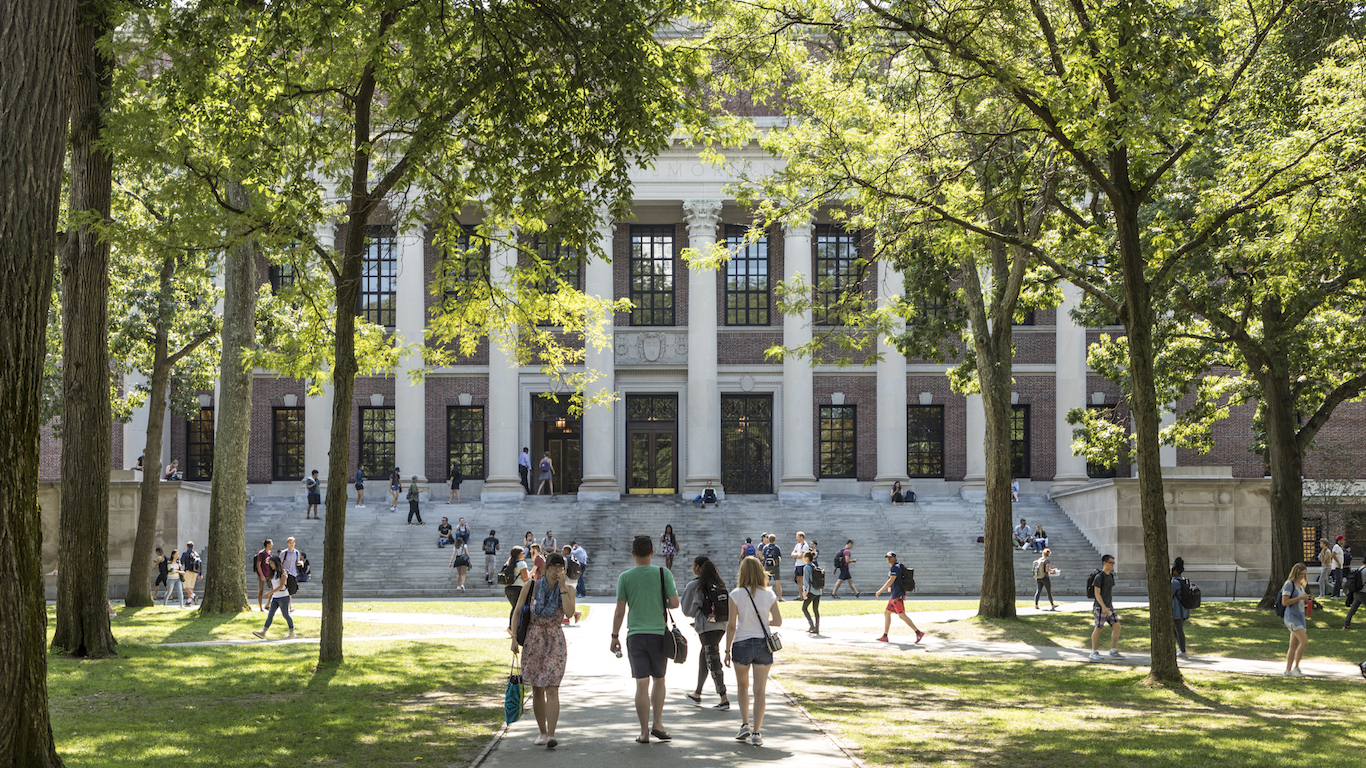Economy
US Colleges Making the Most Money From Application Fees

Published:
Last Updated:

Applications from high school students wanting to begin their college educations next fall have already begun landing on admissions counselors’ desks and will continue in a rising tide through the end of January, with decisions mailed out around April 1. More than a third of would-be college freshman apply to seven or more colleges, and more than 80% apply to at least three.
Each of those applications includes a fee that can run from $10 to as much as $150, with an average of around $50. The fees serve two purposes, according to Mike Brown of LendEDU, a consumer-oriented website with information about financial products, including student loans.
First, application fees are revenue for the colleges, not profit. Every application is reviewed by at least one, and often more, professional admission counselor and the cost of those professional reviews is passed on to applicants and, more likely, their parents. According to the most recent report from the National Association of College Admissions Counselors, the mean number of applications read by a college admissions officer is 854, with a mean at public colleges of 1,472 and 494 at private colleges.
In addition to offsetting costs, application fees function to self-limit college-bound students from applying to hundreds of colleges. This may tilt the playing field toward students who can afford to pay more application fees, but many colleges will waive application fees for less financially able applicants.
LendEDU’s Brown reviewed application data from the National Center for Educational Statistics to come up with three different lists of 500 colleges: those that make the most money off total applications; those that make the most money of declined applications; and those with the highest yield (ratio of enrolled to admitted students).
Here are the 10 U.S. colleges making the most revenue from applications. LendEDU has included the total number of applicants, the fee (for students enrolled in the fall of 2016) and the total amount of revenue the fee generates.
Here are the 10 colleges making the most revenue from students who were denied admissions, along with the revenue amount.
Here’s the list of the 10 colleges with the highest yield of enrolled students from among those admitted. LendEDU includes the total number of applicants, the total admitted, the total enrolled and the yield rate as a percentage.
For the complete lists of all 500 colleges in each of the three categories, visit the LendEDU website.
Are you ahead, or behind on retirement? For families with more than $500,000 saved for retirement, finding a financial advisor who puts your interest first can be the difference, and today it’s easier than ever. SmartAsset’s free tool matches you with up to three fiduciary financial advisors who serve your area in minutes. Each advisor has been carefully vetted and must act in your best interests. Start your search now.
If you’ve saved and built a substantial nest egg for you and your family, don’t delay; get started right here and help your retirement dreams become a retirement reality.
Thank you for reading! Have some feedback for us?
Contact the 24/7 Wall St. editorial team.